It is above all the 100% traditional craft and expertise, passed down from generation to generation, that gives Gruyère AOP its inimitable flavor and impeccable quality. The procedure for production of Gruyère AOP is strictly specified. Milk producers, cheese-makers and affineurs (maturers) respect each of its steps to the letter. This expertise has been guaranteed since 2001 through specifications approved by the Federal Office for Agriculture.
1. High-quality milk
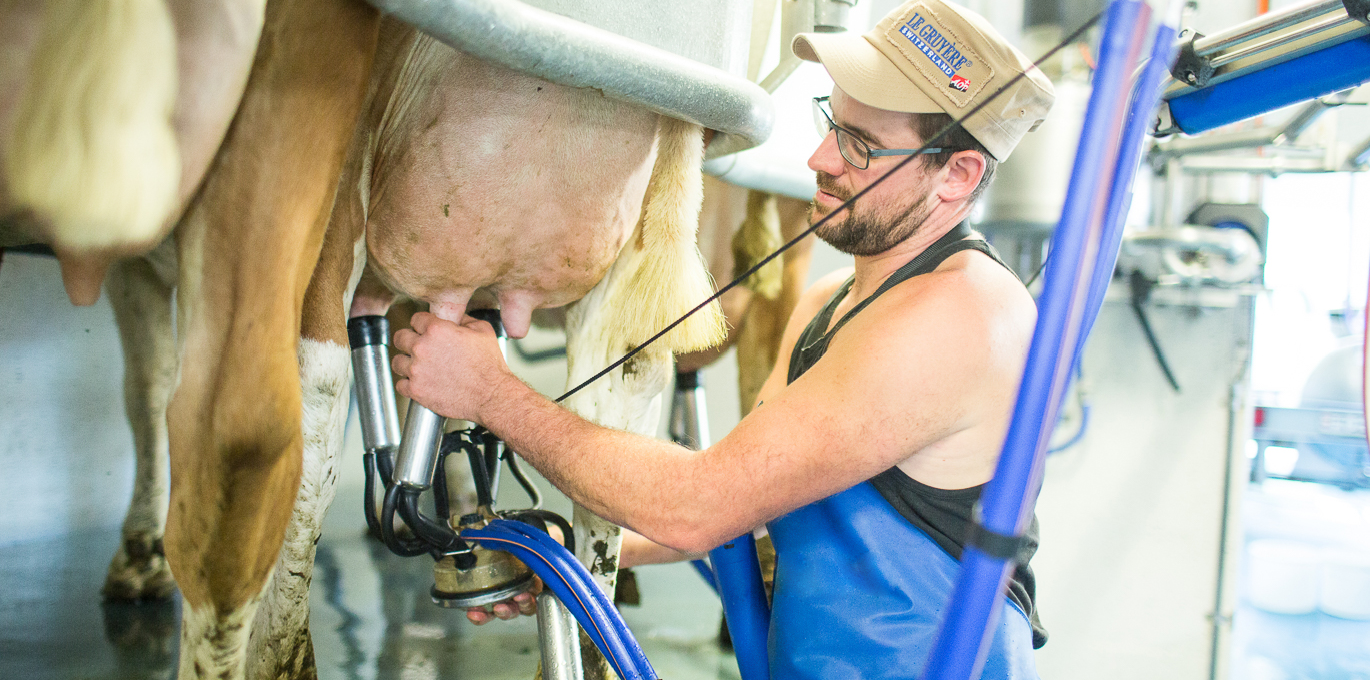
The cows which produce milk for Gruyère AOP are solely fed on natural forage—fresh grass in summer and hay in winter, with no additives or ensilage. Twice a day, in the morning and in the evening, each milk producer delivers this precious ingredient to its assigned cheese dairy.
2. Vat curdling
The morning milk is merged in the copper vat with the evening milk, which was left to settle all night. The cheese-maker adds starter cultures, made from whey, to mature the milk. Then he adds rennet, a natural ingredient extracted from calf stomach, to curdle the milk. After 35 to 40 minutes, the vat has turned into a nice dense mass. As the milk was not heated before the curdling, it maintains all of its aromas. It is one of the qualities of raw milk.
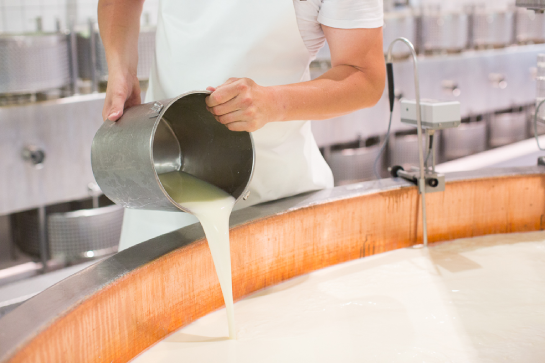
3. Curd cutting and mixing
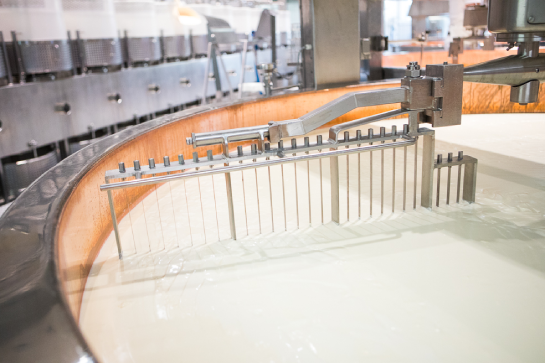
This curd mass is then cut into granules by big knives called “cheese harps” (tranche-caillé). Then the contents of the vats are gradually heated up to 57° (135°F) for 40-45 minutes.
4. Texture control
Once the heating temperature is reached and the granules are the size of wheat grains, the cheese-maker takes a handful of grains and carefully kneads them into a mass to check the texture.
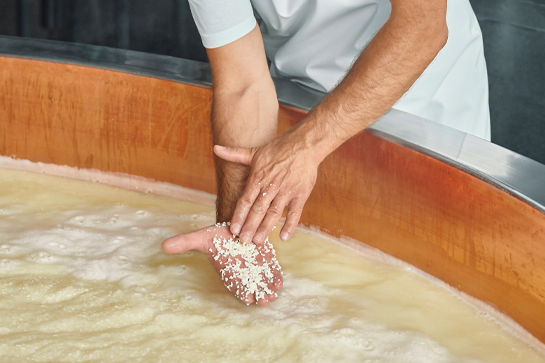
5. Placing in the mold and marking
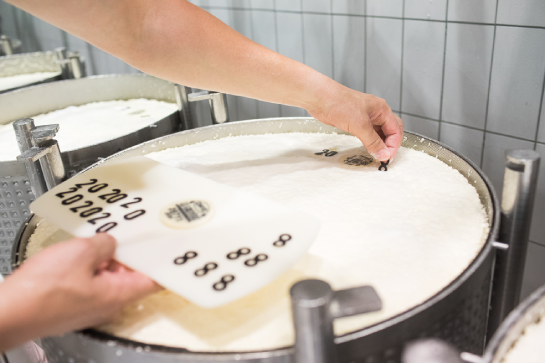
The contents of the vat (grainy curd and whey) are then pumped out into round molds. Each mold is marked on its outer edge (which is called the “heel”) with the inscription Le Gruyère AOP, along with the number of the cheese dairy. The whey runs out and is collected in a large basin underneath. A casein marking is added to the whitish curd mass, indicating the number of the cheese wheel and of the cheese dairy. Furthermore, the manufacturing date is added to each cheese wheel. Casein is a natural protein found in milk: still no additives. Each wheel is then pressed for about twenty hours, with an applied force of up to 900 kg.
6. Salt bath and storage in the cellar
The following day, the cheese-maker removes each wheel from the mold and puts them in a 22% concentrated salt bath, also called brine, for 24 hours. Then begins the maturation. The wheels are stored for three months in the cheese-maker’s cellar. He will give them almost daily care, in order to help the formation of a fine protective rind (called “smear”–morge).
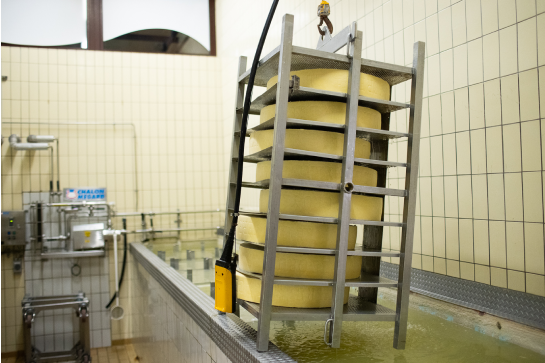
7. Affinage (Maturation) in cellars
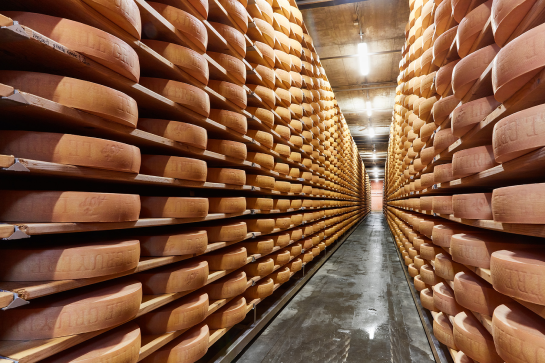
After three months, the wheels leave the cheese dairy to be stored in the caves d’affinage (maturing cellars) for a slow maturation process in a 90% humidity environment and a temperature of 15° (59°F). During this time, the wheels are turned over and brushed with salt water. The cellars give off a typical smell of ammonia, a result of the maturation of the wheels. The affinage lasts in total between 5 and 18 months.
8. Taxation
At four months, the wheels are checked and taxed by experts of the Interprofession du Gruyère association, according to very precise and rigorous criteria. They can display the name Le Gruyère AOP only after this taxation. As always, quality is the key word. As soon as they reach 5 months, the wheels are put on the market by the affineur (maturer).
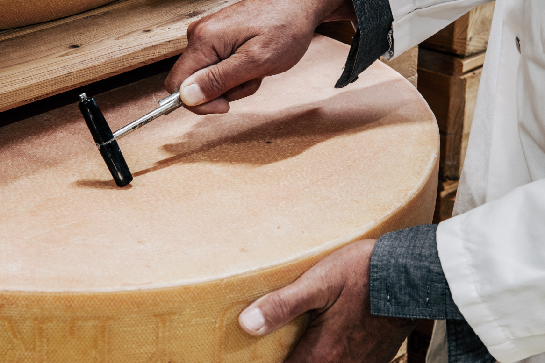
9. Maturation time
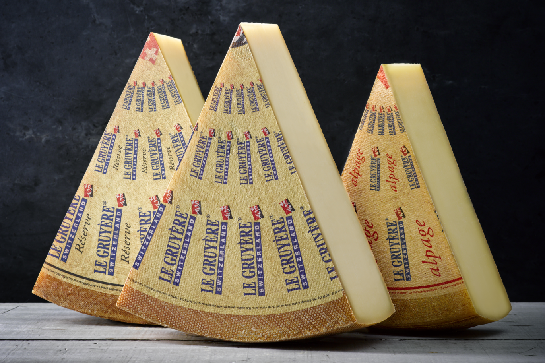
The Gruyère AOP is also a question of taste. Between 6 and 9 months, its soft and refined taste will delight palates in search of sweet pleasures. It is called “Classic”.
Starting at 10 months, Gruyère AOP Réserve has a full-flavored and aromatic taste, which will please lovers of aromatic subtlety.
Some wheels will be matured up to 18, or even 24 months for lovers of strong sensations.
Whatever the age of the Gruyère AOP you are savoring, its qualities remain the same!
A key ingredient
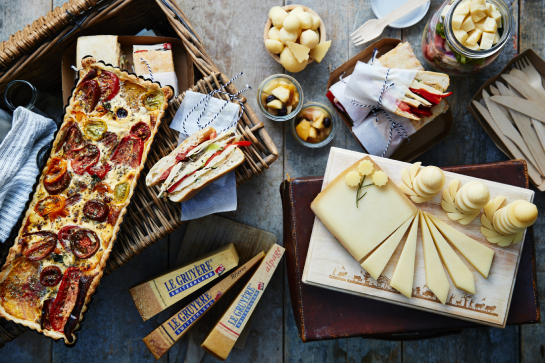
On cheese platters or in the kitchen, Gruyère AOP has become indispensable in pleasing family and guests, and giving yourself a treat at the same time.
Visit a cheese dairy of Gruyère AOP
La Maison du Gruyère invites you to discover the king of cheeses: Le Gruyère AOP. It is located in its very birthplace, close to the mountain pastures and at the foot of Gruyères Castle.
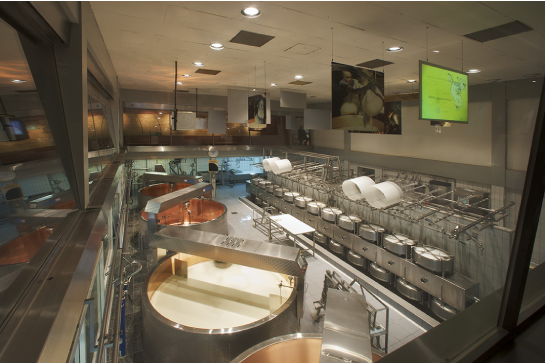
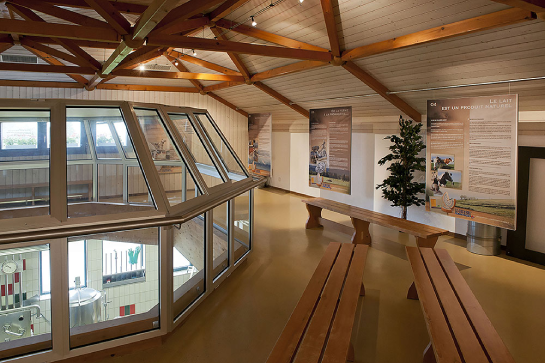
The Martel dairy invites you to discover its visitors’ gallery. From here you can watch the making of Gruyère AOP live and take a walk through an exciting educational exhibition.



